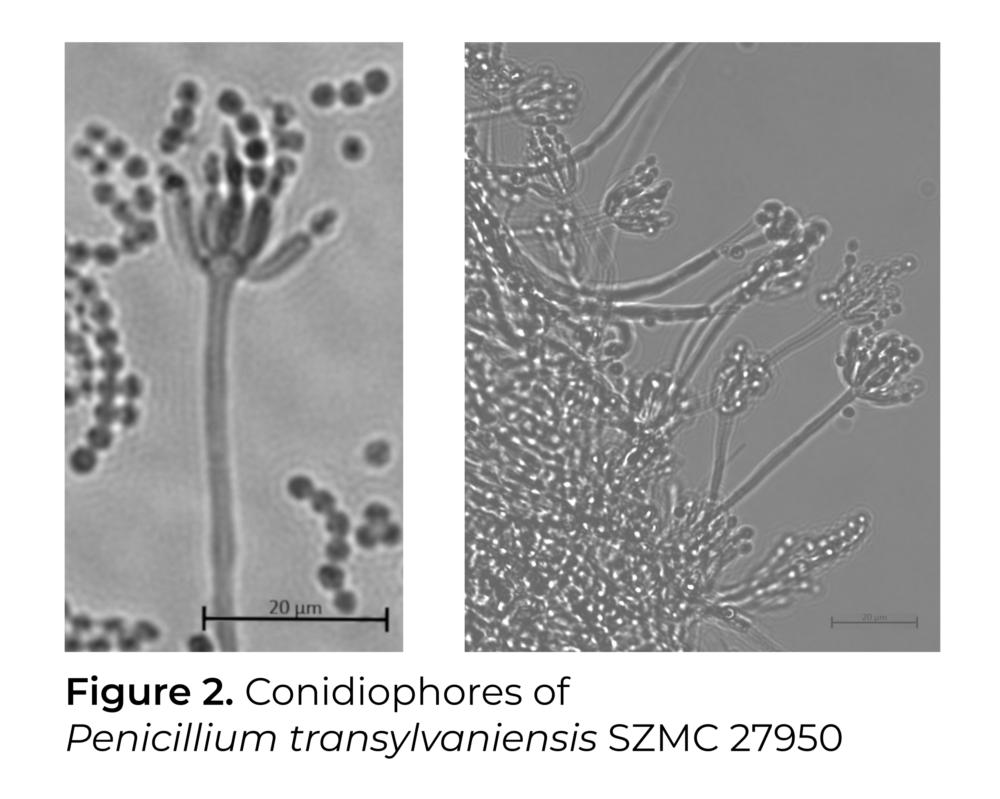[News from the members] Hungary
Penicillium transylvaniensis
Scientists from University of Szeged in Hungary published their new findings:
Characterization of a novel species isolated from cheese
Introduction:
Species of the genus Penicillium are frequently encountered filamentous fungi in cheese. Like many other fermented foods, the inception of mold-ripened cheeses can be attributed to serendipity. Though initially these microorganisms were probably presented as contaminants on cheese, certain strains exhibited beneficial effects on organoleptic characteristics during the maturation process, leading to their deliberate utilization in cheese production.
Some members of the genus Penicillium are among the most commonly isolated filamentous fungal species from cheese. P. camemberti and P. roqueforti are the best known and most widely used species in cheesemaking, but other species such as P. caseifulvum (Frisvad and Samson, 2004) and P. nalgiovense (Bourdichon et al., 2022) are also used as cultures. In 2018, Anelli et al. isolated a new species, P. gravinicasei, from a cave-ripened cheese in Italy.
In our study, we describe a new Penicillium species, Penicillium transylvaniensis, isolated from a cheese with a natural rind from Transylvania.
Materials and methods
The strain was isolated from a natural rind cheese produced in Transylvania (Romania) in 2022. The isolation medium was dichloran rose-bengal chloramphenicol agar, the pure culture was maintained on malt extract agar medium. For DNA extraction, the strain was grown in yeast extract, peptone, D-glucose medium for 10 days and nucleic acid isolation was performed using the MasterpureTM Yeast DNA Purification Kit (Epicentre Biotechnologies, Madison, WI, USA) following the manufacturer’s instructions. The phylogenetic analysis was performed based on ITS, CaM, BenA and RPB2 sequences using the Maximum Likelihood method using RaxML-NG software (Kozlov et al., 2019). In the phylogenetic tree, our isolated species was separated from currently accepted Penicillium species with high support. Macromorphological characterization of colonies was performed after 7 days of incubation at 25 °C in the dark on different media (Figure 1.). For CYA and MEA, colonies were also examined at 15, 30 and 37 °C. Micromorphological characteristics were determined after 35 days of incubation at 25 °C on MEA medium.
Results and discussion
Etymology: The etymology is referring to Transylvania, a region of
Romania, where the type strain was isolated.
section: sect. Sclerotiorum
gene accession numbers: Sequences were submitted to GenBank nucleotide
database under the following accession numbers:
ITS barcode = OP678984 (alternative markers: BenA = OP765560; CMD =
OP765561; RPB2 = OP765562).
deposited: 2022, holotype: freeze dried culture specimen in the Szeged
Microbiological
Collection (SZMC) at the Department of Microbiology, Faculty of
Science and Informatics, University of Szeged, Hungary, SZMC 27950,
includes ex-type culture)
Penicillium transylvaniensis N. Kiss & S. Kocsubé sp. nov.
The morphology of the colonies on different media is shown in Figure 1. Colony diam, 7 days (in mm): CYA 15 °C 3-5; CYA 25 °C 15-17; CYA 30°C 0; CYA 37 °C 0; CYAS 11-13; MEA 15 °C 4-6; MEA 25 °C 14-16; MEA 30 °C 0; MEA 37 °C 0; YES 14-16; OA 11-13; DG18 8-10.
Micromorphology (Figure 2.): Conidiophores strictly
monoverticillate. Stipes smooth walled, 20-99 x 1.5-2.5 μm, vesiculate,
2.5-4 μm in diam.
Phialides: 3(4)–8 per stipe, ampulliform, 4.5-9.5 x 1-3 μm. Conidia
smooth walled, globose, 2-3.5x2-3 μm. Sclerotia/ascomata were not
observed.
The newly isolated species Penicillium transylvaniensis belongs to Penicillium section Sclerotiorum and is able to grow on medium containing 5% NaCl. This property makes it suitable for growth on cheese. However, the ability of mycotoxin production is characteristic of members of genus Penicillium, further investigation of the isolate is needed prior usage as culture in cheese manufacture.



